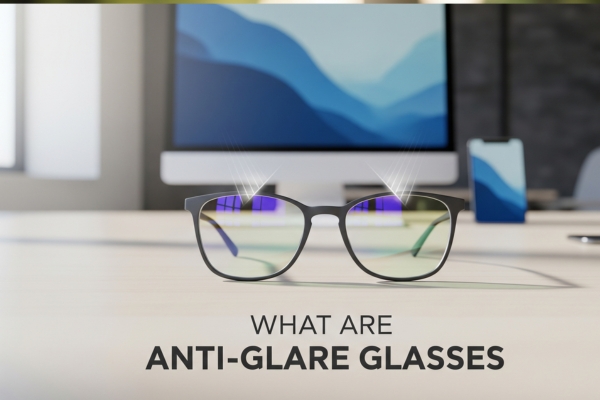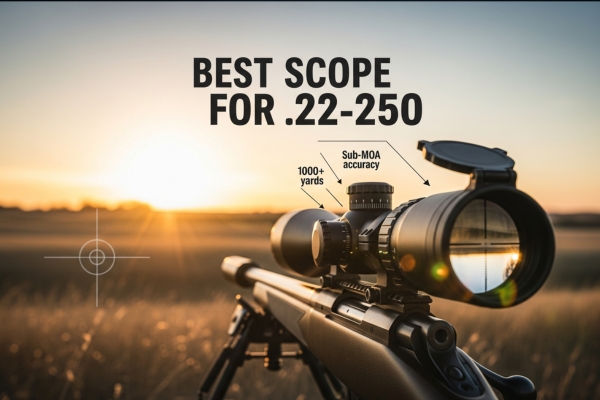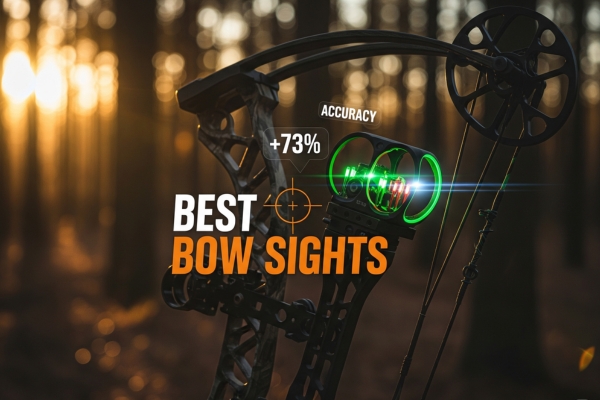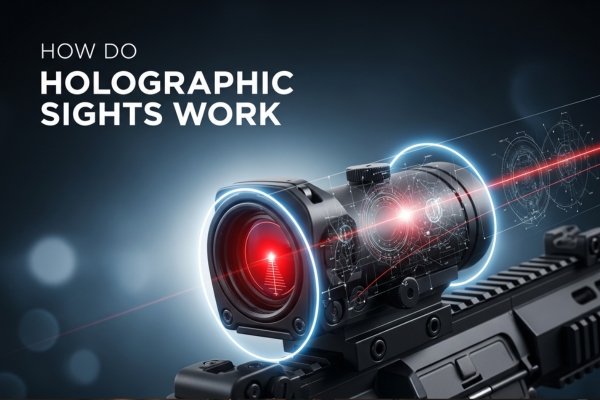



If you’ve spent any time researching optics for your firearm, you’ve probably come across the terms “reflex sight” and “red dot sight” – often used interchangeably in ways that would make a technical writer cringe. After spending countless hours testing various optics and diving deep into the technical specifications, I can tell you there’s a surprising amount of confusion around these terms, even among experienced shooters.
Here’s what really caught my attention: walk into any gun shop and ask five different people to explain the difference between a reflex sight and a red dot sight, and you’ll likely get five different answers. Some will tell you they’re the same thing. Others will insist one is better than the other. A few might even throw holographic sights into the mix just to make things more confusing. The truth? The relationship between these terms is both simpler and more complex than most people realize.
What we’re dealing with here is a classic case of evolving terminology that hasn’t quite caught up with modern technology. The term “reflex sight” actually dates back to the early 1900s, while “red dot sight” emerged as marketing language in the 1970s. Today, these terms overlap in ways that can be genuinely confusing if you’re trying to make an informed purchase decision.
I need to address the elephant in the room right away: technically speaking, every red dot sight is a reflex sight, but not every reflex sight uses a red dot. Confused yet? Let me explain.
The term “reflex” refers to the optical principle these sights use – a reflective or “reflex” system that projects an illuminated reticle onto a lens that you look through. This reflective coating bounces the light from an LED emitter back to your eye while still allowing you to see through the lens to your target. It’s called “reflex” because of this reflective principle, not because it makes your reflexes faster (though that’s a nice side benefit).
“Red dot sight,” on the other hand, originally referred to the type of reticle being projected – literally a red dot. But here’s where things get interesting: modern “red dot sights” come with green dots, gold dots, and even complex reticle patterns. The term stuck because it rolls off the tongue better than “illuminated reflex sight with selectable reticle options.”
In the current market, when someone says “reflex sight,” they’re usually referring to the open-style, heads-up display type of sight with an exposed emitter and a single lens that stands perpendicular to the bore axis. When they say “red dot sight,” they often mean the tube-style enclosed optics, even though both use the same reflex principle.
| Specification | Open Reflex Sight | Tube Red Dot Sight |
|---|---|---|
| Weight Range | 1-3 ounces | 3-8 ounces |
| Battery Life (Typical) | 15,000-25,000 hours | 30,000-50,000+ hours |
| Field of View | Unlimited peripheral | Limited by tube diameter |
| Durability | Moderate (exposed components) | Excellent (fully enclosed) |
| Weather Resistance | Good (varies by model) | Excellent (fully sealed) |
| Optical Clarity | Good (single lens) | Excellent (multi-coated systems) |
| Reticle Options | Limited to moderate | Extensive options available |
| Price Range | $150-$800 | $200-$900 |
| Parallax-Free Distance | 25-50 yards typically | 50-100 yards typically |
| Magnifier Compatible | Yes (with limitations) | Yes (optimized) |
What most people call a “reflex sight” today features an open design with a single lens mounted perpendicular to your line of sight. The LED emitter sits at the base of this lens, projecting the reticle upward onto the reflective coating. This design gives you that characteristic heads-up display appearance that many shooters love.
The open design offers several distinct advantages. First, you get an incredibly wide field of view since there’s no tube restricting your peripheral vision. When I’m running drills at the range, this wider sight picture makes target transitions noticeably faster. You can keep both eyes open more naturally, maintaining better situational awareness.
Weight is another significant factor. Open reflex sights typically weigh between 1-3 ounces, compared to 3-8 ounces for tube-style red dots. On a lightweight build or a concealed carry pistol, those few ounces make a real difference in handling characteristics. The lower profile also means less snag potential when drawing from a holster or maneuvering in tight spaces.
However, the open design comes with trade-offs. The exposed emitter and lens are more vulnerable to damage, dirt, and weather. I’ve had rain droplets accumulate on the lens during matches, creating distortion that wouldn’t occur with an enclosed tube design. The exposed LED emitter can also collect debris, potentially blocking the reticle projection.
Battery life tends to be shorter on open reflex sights too. Without the protective tube to help contain and focus the LED’s output, these sights often need to run at higher brightness levels to maintain visibility in bright conditions. Where a quality tube red dot might give you 50,000 hours of battery life, an open reflex sight might offer 20,000 hours at comparable brightness settings.
Tube-style red dot sights enclose the entire optical system within a cylindrical housing, typically 20mm to 30mm in diameter. The LED emitter sits at the back of the tube, projecting forward onto a reflective lens system. This enclosed design has become the standard for military and law enforcement applications, and there are good reasons for that.
Durability stands out as the primary advantage. With all the sensitive components protected inside a sealed tube, these optics can handle serious abuse. Military-grade models are tested to withstand repeated drops, water submersion to significant depths, and extreme temperature variations. The enclosed design also means consistent performance in adverse weather – no worrying about rain, snow, or mud interfering with your sight picture.
The tube design allows for more sophisticated multi-coated lens systems. High-end models use multiple lens elements with specialized coatings to maximize light transmission and minimize distortion. This results in a clearer, brighter sight picture with less blue tinting or chromatic aberration around the edges. Some models achieve over 90% light transmission, making them usable even in very low light conditions without cranking up the reticle brightness.
Modern tube red dots also excel in battery efficiency. The enclosed design allows engineers to optimize the LED output for the specific optical path, and many models now feature motion-activated sensors that automatically adjust brightness or shut off when not in use. The Aimpoint T2, for example, can run continuously for 5 years on a single CR2032 battery at a usable brightness setting.
The main disadvantages of tube designs relate to size and field of view. Even compact models add noticeable bulk and weight compared to open reflex sights. The tube itself restricts your field of view – while a 2 MOA dot in a 20mm tube gives you plenty of precision for accurate shooting, it doesn’t offer the same wide-open sight picture as an open reflex design. This can slow down target acquisition in close-quarters scenarios where speed matters more than precision.
Beyond the obvious structural differences, several technical factors distinguish these sight types in practical use. Understanding these differences helps explain why certain designs excel in specific applications.
Both sight types can be designed to be parallax-free at a specific distance (usually 50 or 100 yards), but they achieve this differently. Tube red dots use their extended optical path and multiple lens elements to minimize parallax across a wider range of distances. The longer sight radius within the tube helps maintain alignment even when your eye position shifts.
Open reflex sights have a shorter optical path, which can make them more sensitive to parallax error at extreme angles. However, at typical engagement distances under 100 yards, this difference is largely academic. I’ve tested both types extensively, and within normal shooting positions, both designs maintain adequate parallax control for practical accuracy.
This is where tube designs generally pull ahead. The protected environment inside a tube allows for more sophisticated coatings and multiple lens elements without worrying about environmental exposure. Premium tube red dots can achieve remarkable clarity with minimal distortion or color shift.
Open reflex sights typically use a single lens with a dichroic coating that reflects specific wavelengths (red or green for the reticle) while transmitting others. This simpler design can introduce a slight blue or green tint to the sight picture. While this doesn’t affect accuracy, some shooters find it distracting, especially when transitioning between magnified optics and the reflex sight.
Modern tube red dots often feature multiple reticle options – dots of various sizes, circles, crosshairs, or combination reticles. Some models allow you to switch between reticles on the fly, adapting to different shooting scenarios. The enclosed design makes it easier to implement complex electronics for these features without compromising durability.
Open reflex sights traditionally offered simpler reticles, though this is changing. Newer models from companies like Holosun include multiple reticle options and even solar backup power. However, the exposed design still limits how complex these systems can be while maintaining reliability.
I need to address holographic sights because they often get lumped in with reflex sights, adding to the confusion. Holographic sights like the EOTech models use completely different technology – a laser diode illuminates a holographic film to create the reticle image. This isn’t a reflex system at all.
While holographic sights look similar to open reflex sights externally, they offer unique advantages: the reticle remains the same size regardless of magnification (when used with a magnifier), and they maintain zero even with damaged glass. However, they’re significantly more expensive, heavier, and have much shorter battery life – typically 600-1000 hours compared to tens of thousands for LED-based reflex designs.
For most shooters, the practical differences between a quality open reflex sight and a holographic sight don’t justify the 3-5x price premium of holographic technology. But for specific military or law enforcement applications where the unique properties of holographic sights matter, they fill an important niche.
After extensive testing in various shooting disciplines, I’ve found that each design excels in specific scenarios. Understanding these use cases helps clarify which type might work best for your needs.
Open reflex sights dominate in USPSA and 3-gun competitions where speed and field of view matter most. The wide-open sight picture allows for faster target transitions and better peripheral awareness. The lighter weight also helps maintain weapon balance during rapid movement. Top competitors often choose large-window reflex sights like the Sig Romeo3 Max or the Leupold DeltaPoint Pro for these advantages.
Law enforcement and military units typically prefer enclosed tube designs for their superior durability and weather resistance. The ability to operate reliably after being submerged, frozen, or covered in mud makes tube red dots the logical choice for serious defensive use. The Aimpoint T2 and Trijicon MRO have become standards in these communities for good reason.
Hunters face a unique set of requirements. For close-range dangerous game hunting where quick target acquisition is critical, open reflex sights offer advantages. But for general hunting where weather resistance and battery life matter more, enclosed red dots make more sense. Many hunters are moving to enclosed mini red dot sights (MRDS) like the Aimpoint Acro or Holosun 509T that offer tube-like durability in a more compact package.
The pistol optics market has exploded in recent years, with both open and enclosed designs competing for dominance. Open designs like the Trijicon RMR and Holosun 507C remain popular for their low profile and light weight. However, enclosed pistol optics are gaining ground as shooters prioritize durability and lint/debris resistance for everyday carry guns.
When choosing between sight designs, consider these practical factors beyond the basic reflex vs. tube debate:
Different sight designs use different mounting standards. Open reflex sights often use proprietary mounting plates or direct milling patterns specific to each model. Tube red dots typically use standardized mounts (like Aimpoint Micro or 30mm ring mounts) that offer more flexibility in positioning and easier swapping between weapons.
If maintaining iron sight compatibility matters to you, consider sight height carefully. Lower 1/3 co-witness has become the standard for carbines, allowing you to use iron sights through the optic if needed. Absolute co-witness aligns the iron sights centered in the optic window. Open reflex sights typically sit lower, making absolute co-witness more common, while tube red dots offer more height options.
Planning to add a magnifier? Tube red dots generally work better with flip-to-side magnifiers due to their consistent round aperture and superior optical quality. While magnifiers can work with open reflex sights, the combination often suffers from increased distortion and a less forgiving eye box.
For night vision applications, both designs offer compatible models, but implementation differs. Tube red dots often include dedicated night vision settings with very dim reticle options. Open reflex sights might bloom or wash out under night vision unless specifically designed with NV-compatible settings. If night vision use is planned, verify compatibility before purchasing.
Quality optics aren’t cheap, but the price ranges differ between categories. Entry-level open reflex sights from reputable manufacturers start around $200-300, while comparable tube red dots often cost $400-500. At the high end, both can exceed $700-800. However, the used market tends to favor tube red dots for value retention, something to consider if you might upgrade later.
Let me address some persistent myths I encounter regularly in discussions about these optics:
“Reflex sights are faster than red dots” – This assumes all reflex sights are open designs and all red dots are tubes, which isn’t accurate. A high-quality tube red dot with a large window can be just as fast as an open sight for most applications. The difference in speed comes down to training and familiarity more than sight design.
“Red dots are more accurate” – Mechanical accuracy depends on mounting stability and zero retention, not whether the sight is open or enclosed. Both designs can deliver sub-MOA precision when properly mounted. The difference lies in durability and maintaining that zero under harsh conditions.
“Open sights don’t work in rain” – While rain can affect open sights more than enclosed ones, modern hydrophobic coatings significantly reduce this issue. I’ve shot matches in heavy rain with open reflex sights without major problems, though I did need to wipe the lens occasionally.
“Tube sights are obsolete technology” – Despite the popularity of open designs, tube red dots continue to evolve with new features and improvements. The enclosed design allows for innovations that wouldn’t be possible in an open format. Far from obsolete, they remain the gold standard for duty use.
The optics industry continues to innovate, and several trends are worth watching:
Enclosed emitter reflex sights represent a hybrid approach, protecting the LED emitter while maintaining an open sight picture. Models like the Holosun 509T and Aimpoint Acro P2 pioneered this design, offering improved durability without the bulk of a full tube.
Smart optics with integrated rangefinders, ballistic calculators, and bluetooth connectivity are emerging. While currently found mainly in premium hunting scopes, this technology will likely trickle down to reflex and red dot sights as costs decrease and batteries improve.
Solar backup power has become increasingly common, with photovoltaic cells supplementing battery power in bright conditions. This technology works particularly well with open designs where the solar panel can be integrated into the sight body without adding bulk.
Etched reticles that remain visible without power are appearing in more models, providing a backup sighting option if electronics fail. This feature, borrowed from prism scopes, adds redundancy without significant weight or cost.
Q: Are reflex sights and red dot sights the same thing?
A: Technically, all red dot sights are reflex sights because they use reflective optical technology. However, in common usage, “reflex sight” often refers to open-style sights while “red dot” refers to enclosed tube designs. The terminology overlaps significantly and varies by manufacturer.
Q: Which type is better for a first-time optic buyer?
A: For most first-time buyers, I recommend starting with an enclosed tube red dot from a reputable manufacturer. The durability and weather resistance provide peace of mind while you’re learning, and the consistent performance helps build confidence. Once you understand your specific needs, you can explore open designs if they better suit your application.
Q: Can I use a reflex sight for long-range shooting?
A: While both reflex and red dot sights work at distance, they’re optimized for close to medium range (0-300 yards). For true long-range precision, you’ll want a magnified optic. However, many shooters successfully use red dots with magnifiers for extended range capability.
Q: How often should I change batteries?
A: Even with multi-year battery life claims, I recommend changing batteries annually on defensive firearms. Mark your calendar for the same date each year – many shooters use their birthday or daylight savings time as a reminder. Keep the old battery as an emergency spare.
Q: Do green dot sights offer advantages over red?
A: Green dots appear brighter to the human eye at the same power output, potentially extending battery life. Some shooters find green easier to see against certain backgrounds or with colorblindness. However, green LEDs typically cost more and may wash out more easily in very bright conditions. It’s largely personal preference.
Q: Will a reflex sight work with astigmatism?
A: Astigmatism affects how you see illuminated reticles in both sight types, often causing the dot to appear starred or smeared. Some people find prism scopes or etched reticle optics work better for their eyes. If you have astigmatism, try before you buy when possible, or purchase from retailers with good return policies.
Q: Is it worth spending more for a premium sight?
A: Premium optics offer superior glass quality, durability, and warranty support that can justify the cost for serious use. However, mid-tier options from companies like Holosun and Sig Sauer now offer excellent performance for most users. Determine your actual needs before spending top dollar – a $300 sight might serve you perfectly well.
Q: Can I mount these sights on any firearm?
A: Most modern firearms can accept optics with appropriate mounting solutions, but compatibility varies. Pistols often require milled slides or adapter plates. Rifles and shotguns need appropriate rail systems (Picatinny/Weaver). Verify mounting compatibility before purchasing, and factor in mounting hardware costs.
After all this technical discussion, here’s what really matters: both open reflex sights and enclosed tube red dots represent mature, reliable technology that can significantly improve your shooting. The “best” choice depends entirely on your specific needs, not on which design is theoretically superior.
For a home defense rifle that lives in a climate-controlled safe, an open reflex sight might be perfect. For a patrol carbine that rides in a squad car through all weather conditions, an enclosed tube makes more sense. Competition shooters might choose based on division rules and personal preference. Hunters should consider their typical environment and hunting style.
The terminology confusion between “reflex” and “red dot” is ultimately less important than understanding the practical differences between open and enclosed designs. Focus on the features that matter for your application: durability, battery life, field of view, weight, and mounting options. Read reviews from users in similar applications, and whenever possible, try before you buy.
Remember that even the best optic is only as good as your training with it. Whether you choose an open reflex sight or an enclosed red dot, invest time in proper zeroing, regular practice, and understanding your optic’s features and limitations. A moderately priced sight you train with regularly will serve you better than an expensive one that sits in the safe.
The evolution of these technologies continues to blur the lines between categories. Enclosed emitter reflex sights combine benefits of both designs. Miniaturized red dots offer tube-like protection in reflex-sized packages. As technology advances, we’ll likely see more hybrid designs that challenge our current categorizations.
What excites me most is that we’re living in a golden age of optics accessibility. Quality sights that would have been military-exclusive technology twenty years ago are now available to civilian shooters at reasonable prices. Whether you call it a reflex sight or a red dot, these tools make shooting more enjoyable and accessible for everyone from beginners to professionals.







